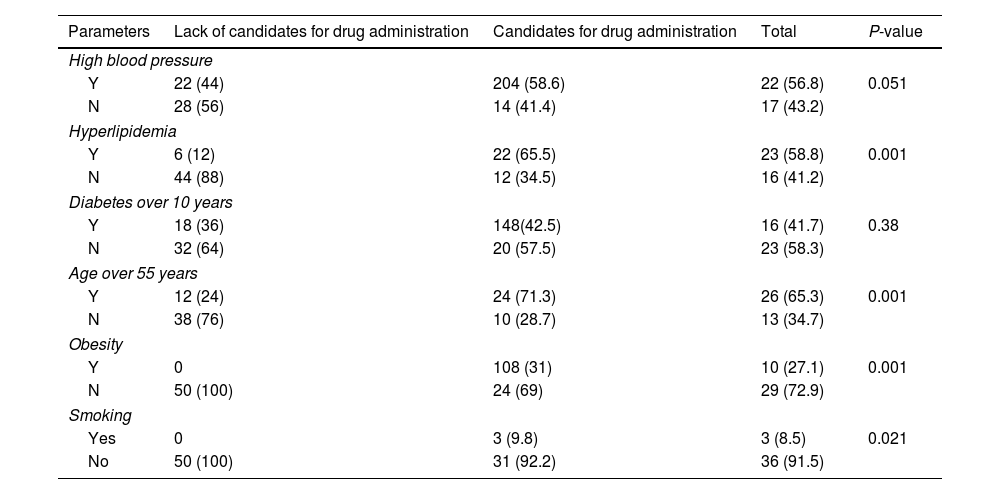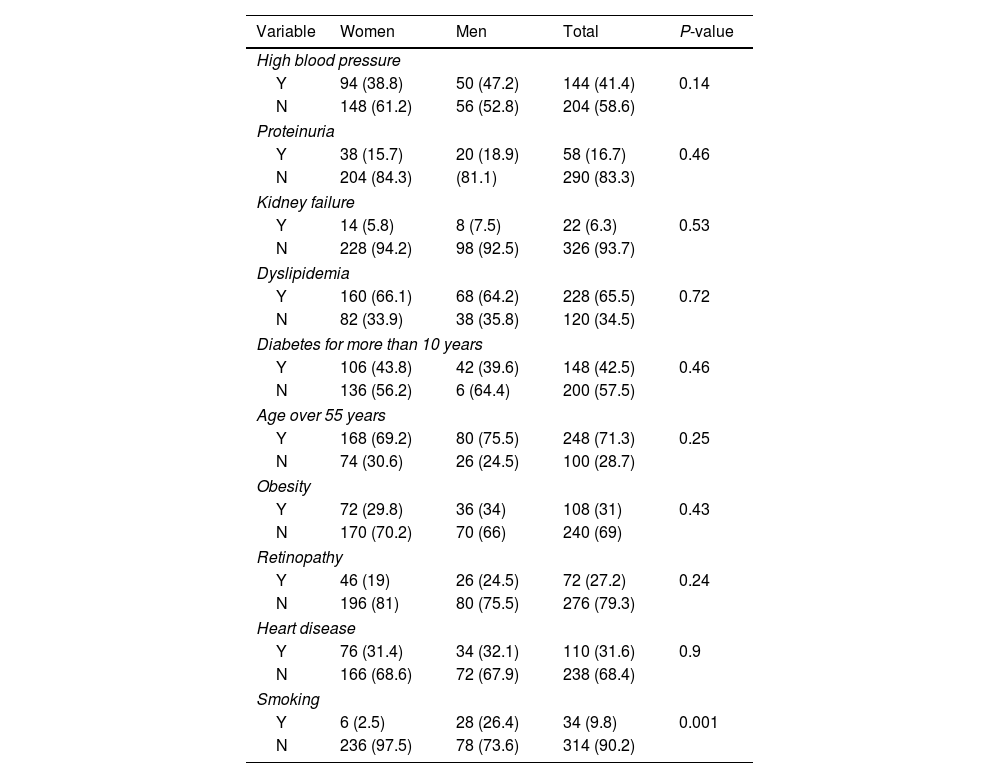Empagliflozin plays a beneficial role in individuals with type 2 diabetes at high risk of cardiovascular complications. This study aimed to assess the prevalence of individuals with type 2 diabetes who required empagliflozin based on clinical guidelines between the years 2022 and 2023.
Material and methodsThis study was a descriptive-analytical cross-sectional study conducted on a target population of patients with type 2 diabetes. Patient data, including demographic characteristics, smoking status, hypertension, hyperlipidemia, renal insufficiency, retinopathy, and proteinuria, were collected. The indication for prescribing empagliflozin was determined based on the risk of cardiovascular complications.
ResultsA total of 398 individuals with type 2 diabetes with a mean age of 58.4 years were examined. Overall, 87.4% of the patients had an indication for empagliflozin prescription. The indication for empagliflozin prescription was significantly higher in men, individuals with hyperlipidemia, those over 55 years of age, obese individuals, and smokers. The mean age, body mass index, and triglyceride levels were higher in candidates for empagliflozin prescription. Male candidates for empagliflozin had significantly higher rates of smoking and systolic blood pressure compared to females.
ConclusionsThe findings of this study demonstrated that a significant percentage of individuals with type 2 diabetes had an indication for empagliflozin prescription based on clinical and laboratory criteria.
La empagliflozina tiene un papel beneficioso en las personas con diabetes tipo 2 con alto riesgo de complicaciones cardiovasculares. Este estudio tuvo como objetivo evaluar la prevalencia de pacientes con este padecimiento que requerían empagliflozina según las guías clínicas entre los años 2022 y 2023.
Material y métodosSe trata de un estudio transversal descriptivo-analítico realizado en una población objetivo de personas con diabetes tipo 2. Se recogieron los datos de los pacientes, incluyendo las características demográficas, el hábito tabáquico, la hipertensión, la hiperlipidemia, la insuficiencia renal, la retinopatía y la proteinuria. La indicación para prescribir empagliflozina se determinó en función del riesgo de complicaciones cardiovasculares.
ResultadosSe examinaron un total de 398 individuos con diabetes tipo 2 con una edad media de 58,4 años. En general, 87,4% de estos tenía una indicación para la prescripción de empagliflozina, la cual fue significativamente mayor en los hombres, aquellos con hiperlipidemia, obesidad, los mayores de 55 años y los fumadores. La edad media, el índice de masa corporal y los niveles de triglicéridos fueron mayores en los candidatos a la prescripción de este medicamento. Los candidatos masculinos a este fármaco tenían tasas significativamente más altas de tabaquismo y presión arterial sistólica, en comparación con las mujeres.
ConclusionesLos resultados de este estudio demostraron que un porcentaje significativo de personas con diabetes tipo 2 tenía una indicación para la prescripción de empagliflozina según los criterios clínicos y de laboratorio.











